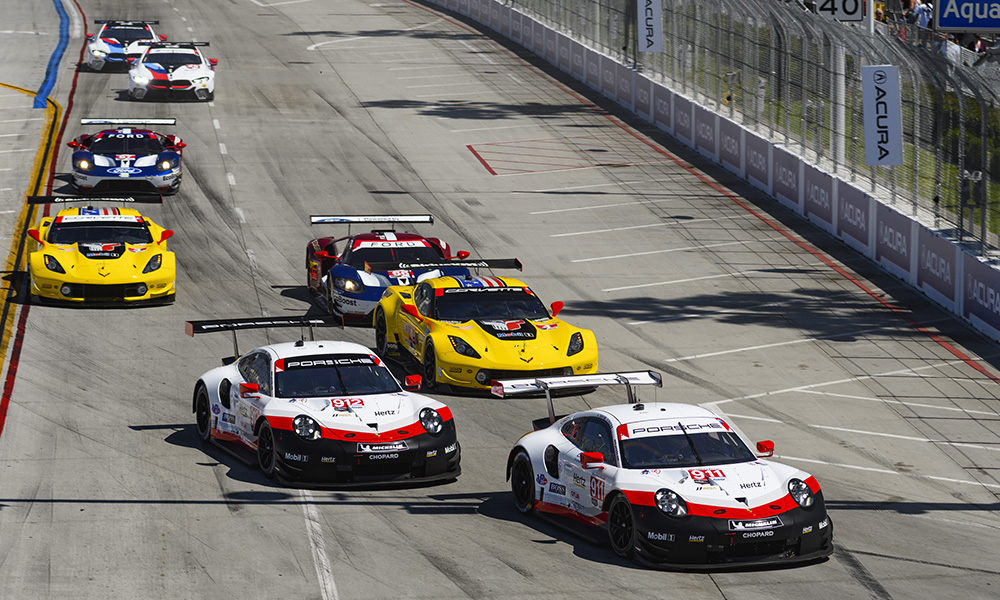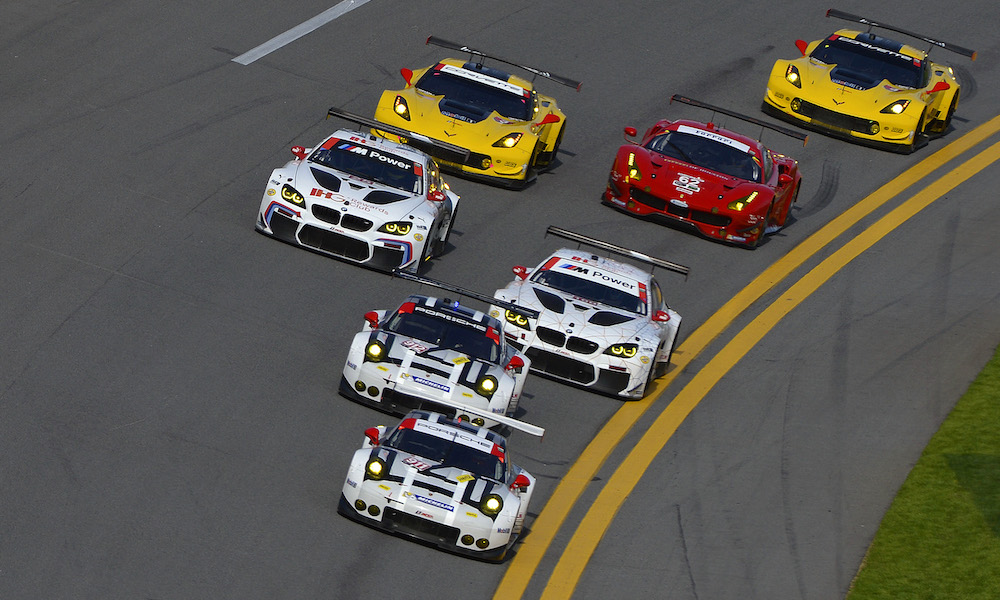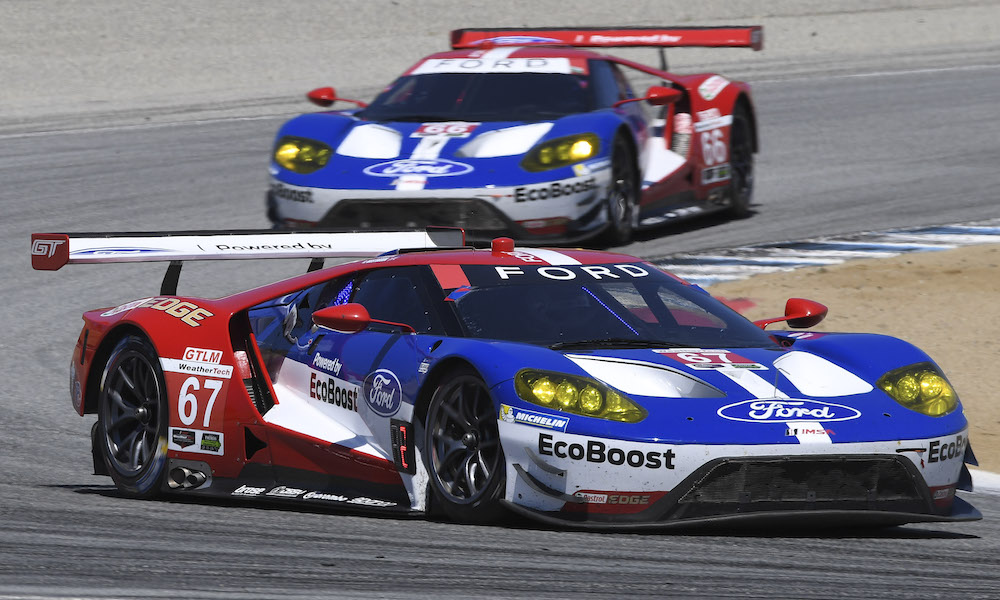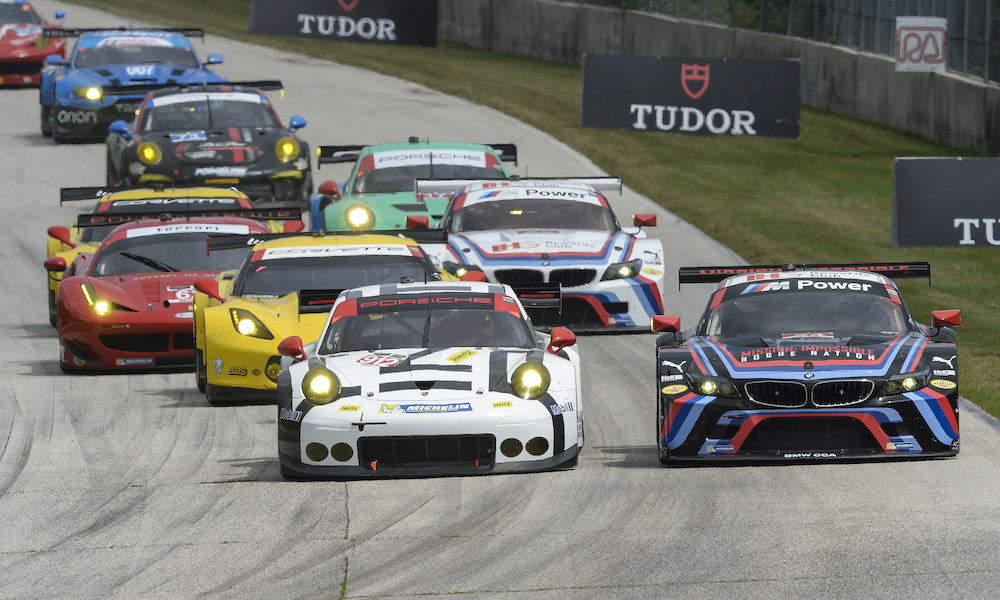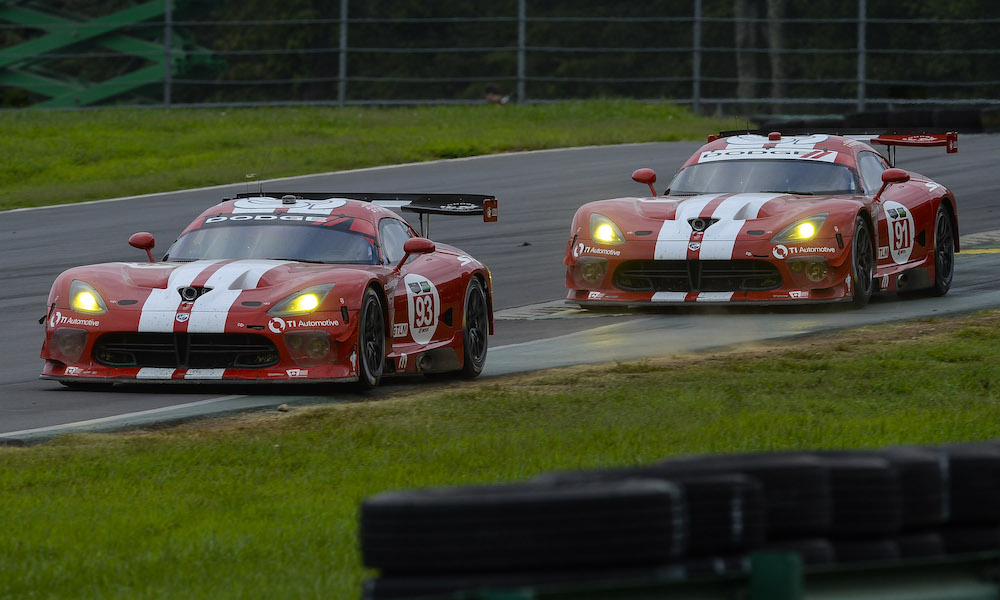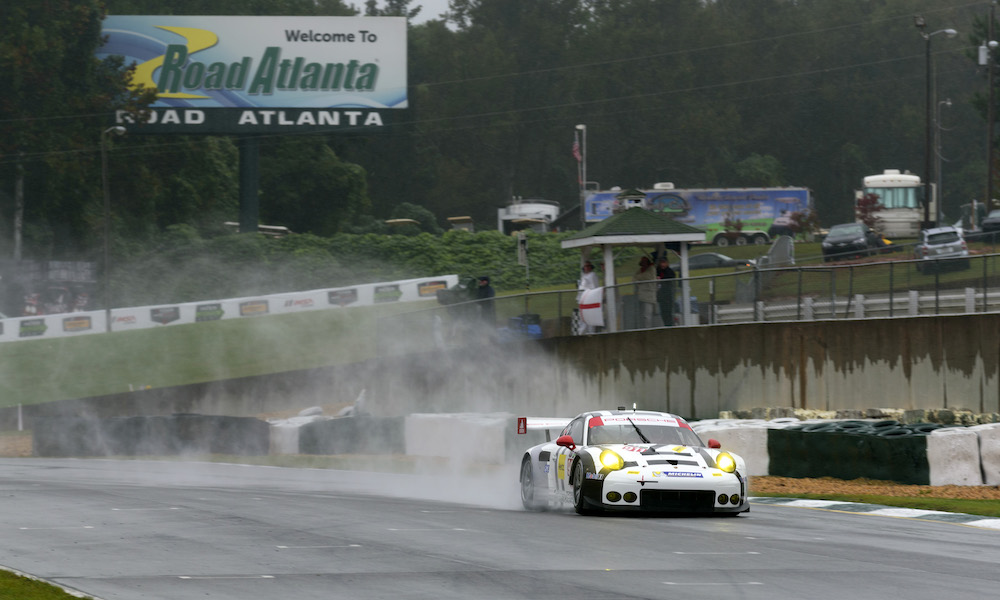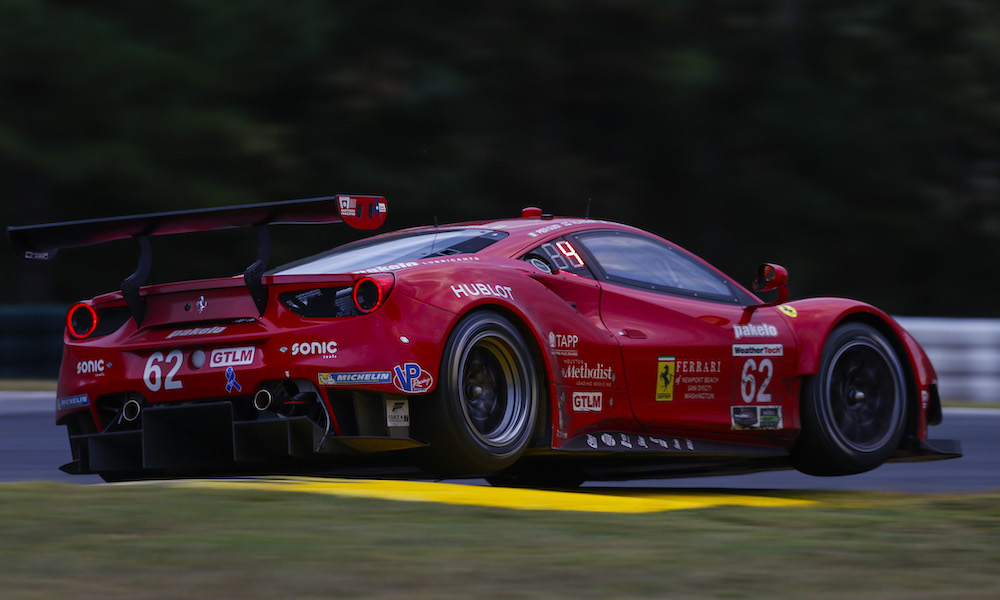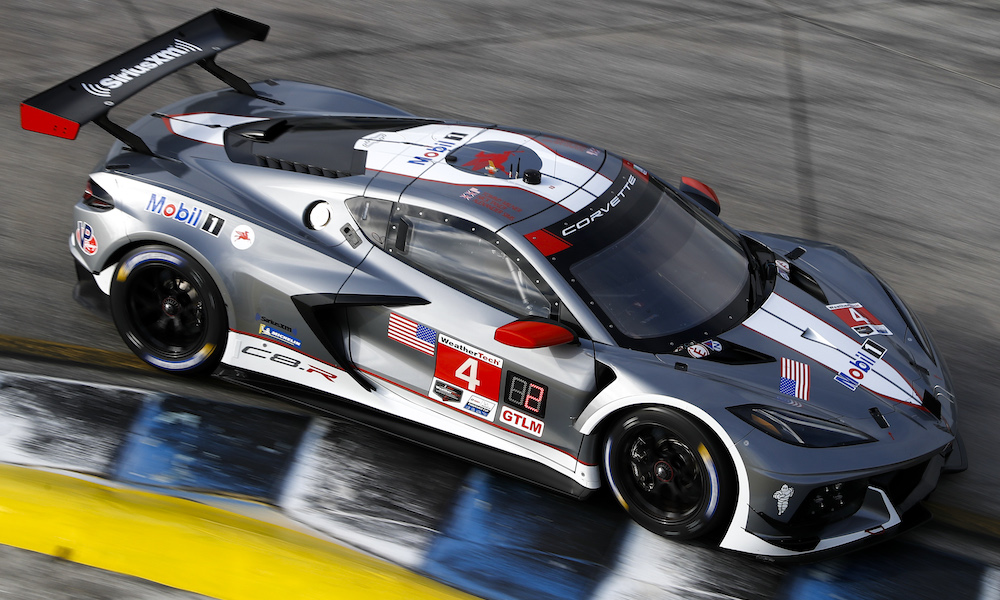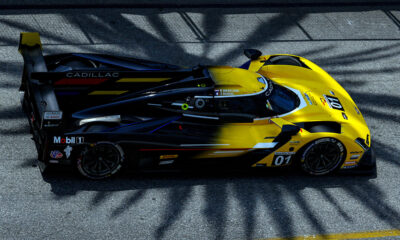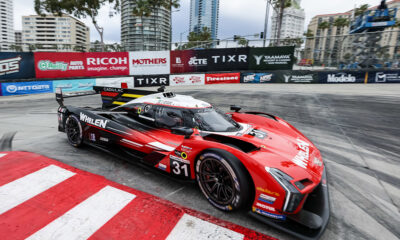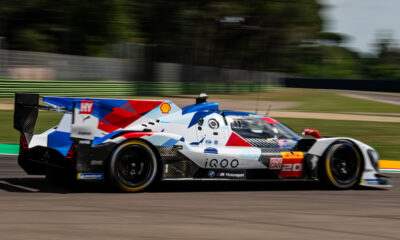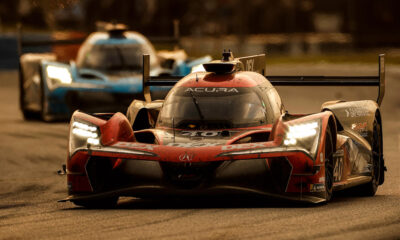This weekend’s Motul Petit Le Mans marks the final race for GT Le Mans, a racing class that traces its roots back to the GT2 formula that appeared in American Le Mans Series.
When the championship merged with Grand-Am in 2014, the category became GTLM and consistently produced intensely close racing between factory-operated teams.
Ahead of its curtain call, drivers who raced in the class look back on the vehicles, the competition and the technological progress that came to define GTLM as one of the world’s most explosive and entertaining motorsport divisions.
GTLM will be replaced next year by GTD Pro, where factory-backed entries will continue to compete in IMSA under the FIA GT3 regulations.
Antonio Garcia – Corvette Racing stalwart, three-time GTLM champion and most successful driver in the category with 19 wins
“The main thing about GTLM is that I was lucky enough to be part of the transition between GT1 and GT2. You saw all the different names that got into what this category became.
“You look back at the speeds we are doing now, we could never imagine them when we first went into GT2. We are faster now than we were with GT1.
“To be part of it and run all three generations of Corvette and win championships with each is pretty cool. These were great years that we’ve had – with more or less competition.
“It’s been great fun over the last 10 years. You can see year by year all the resources that the manufacturers put in – how everything is advancing and the resources the manufacturers put in on the simulator side, tire development, car development, electronics… we have all kept improving everything.
“We’re now at the point where we are faster now than [when] we had with 100 more horsepower. It’s cool to be able to explore every single detail with such a big team behind you trying to find every tenth. It’s been nice to be part of that.”
Frederic Makowiecki – two full seasons with Porsche, won 12H Sebring and Petit Le Mans
“My first time driving GTLM in the USA was in 2014, and then I participated in both full-seasons and the endurance races. What I really appreciated was that it was full attack.
“You would arrive in the racetrack and push from the beginning. This is what you want. For that, it was always a very close fight. It was always racing with the cars door-to-door.
“As a driver, it is probably one of the highest levels I got to in my career. Because when you are here, you are full of factory programs, and it was not one team or factory driver that was on another level to the others.
“The fact that GTE-Pro in WEC went to the double-stint tire created something different. The racing was not as pure as it was here, where you are maximum attack for the full stint.
“In some other championships, they created rules to make things fair, but in GTLM you just needed to do the best job. If you were not winning, you were not doing the best job.
“It made it easier for the fans and made it a high level of racing. Sometimes there is too much calculation and thinking about what to do, to be capable of getting an advantage.
“That’s not the best way of racing. The best way of racing is doing the job on the track. This is what, as a driver, I took crazy pleasure to come here every year and it was something that I would always request to drive again, because I loved the spirit of the racing.”
Richard Westbrook – Raced Porsches and Corvettes in GT2 before embarking on a race-winning post-merger spell with the Ford GT
“It was a privilege to be a part of the GT Le Mans era. First with Porsche when I came over to America when it was called GT2 then. Obviously then with Corvette and then for probably the best part being part of the Ford program for those four years.
“For me, that was the real golden time of GT Le Mans. It’s when all of the manufacturers were really throwing everything at it. It was a big arms race.
“Something that I was always aware of was that you were in a golden period and it wasn’t going to last forever because nothing that good does.
“I was always aware of that and was trying to be cognizant and really enjoy it because I knew I was part of something really special.
“It was so cool to be a part of, that level of expertise on the design of the cars and the competition. It was so, so high with the manufacturers we were racing against.
“The cars were getting so good to drive. A car that weights one-and-a-quarter tons to handle like they do was just incredible. The grip we were getting.
“The highlights were so many but I think the ones that really stand out when the GTs, deservedly so, had their own standalone races. Lime Rock and VIR where the fan turnout seemed to be incredible despite there being no prototypes.
“It just showed you how popular GT racing is. It was a really cool period to be a part of and I’m just so lucky and glad that I was able to pinch myself and enjoy it while it lasted, because it was not sustainable as we can see. Nonetheless it was a great, great period of racing.”
John Edwards – BMW factory driver who raced in three generations of GTLM machinery
“I joined post-merger. I did a partial year when it was ALMS when the merger was just announced. Then in the merged series with the Z4, then the M6, then the M8.
“For me, at least at BMW, it was really cool to see the development because, quite honestly when I joined BMW I had my eye on DTM. That seemed like the top and place to go.
“As the years went on I realized the level of effort BMW was putting into this program was turning it into a world-class operation.
“From that first year I joined where it was being mostly run by the team to now it’s a true partnership between the manufacturer and the team, it’s been a big development, both in terms of number of people but also in the effort that goes into it back at the factory in coordination with the team’s race shop.
“It’s a really cool thing to see grow and I think it points to how important the program was to a manufacturer like BMW. You see the same with Pratt & Miller and we saw with Ford and Porsche over the years. The effort was constantly growing.
“For various reasons it’s going away but it was only getting more and more competitive as years went on, regardless the number of cars.
“You could qualify last the week after you won the race. It was just that competitive. That’s why I loved being there because you always had to be on the top of your game.
“But all this reminiscing about GTLM is not to say that things are getting worse. I think times are evolving and the manufacturer focus is shifting a bit towards the full factory programs being in LMDh and a lot of customer support on the GT side.
“It kind of makes sense. It’s not to say I won’t miss GTLM but it’s just a sign of changing times. It’s a category I’ll always remember with fond memories but it doesn’t mean things are going in the wrong direction.
“I think LMDh has so much interest and it’s going to be a high number of cars with the same level of competition. It’s going to be a really intense to be. That just means more cars for GT cars on the customer side. It might be a little different with driver ratings and regulations you have to worry about if you’re in GTD vs. GTD Pro and all of that.
“It’s just a sign of changing times and I’m really looking forward what’s going to happen both on the GT side and LMDh side.”
Kuno Wittmer – Inaugural GTLM champion in 2014 with Dodge, won Petit Le Mans in 2017 with BMW
“The cars were magical to drive. The Viper GTS-R was a development process that took three or four years to get the car going.
“It was a crowd-pleaser, to be honest. Everybody was up on their feet when they saw the cars go by. It was always against Corvette: American muscle against each other.
“From a driver’s point of view, it was an absolutely raw machine to drive. Raw, yet somehow refined in one way that it had a good amount of pace in it.
“One of the things I had to get used to was that you couldn’t rev past 5,000 rpm without the motor choking out. It was something to get used to for me, when I was coming from an era of 8-9,000 rpm race cars.
“The Michelin confidential tires were superior. We had different grades of temperatures to use from. It’s something that hopefully one day I can touch again, to go for 60 minutes from a sticker tire right to the end and the car never changed.
“I get goosebumps every time I talk about these cars. I strongly believe that this is a category that I’m going to miss.
“And everything we did on the race cars transpired directly into the streetcar. Hopefully that keeps going into the next GTD world.
“If you bought an M or an SRT, guess what? We probably had some of those parts on our car! The whole development process of us being the prototype drivers for these bits and pieces for customer cars down the road, was a big plus. So I hope that keeps going.”
Nick Tandy – Porsche linchpin from 2014-20, now with Corvette Racing
“It’s been such a great era. It’s been the most enjoyable phase of my career and what’s been the biggest part of my career to date.
“From 2014 to now, I only missed part of a season in 2017 but still raced GTLM part of the year.
“The glory days were really 2016, 2017 and 2018 when you had four and five manufacturers putting out the best GT cars ever developed and fighting it out with the best drivers in the world and best teams around.
“It was a Balance of Performance class, but it goes to show that kind of racing does work.
“Some of the races we had over the years… I haven’t experienced racing on a large-scale circuit in anything else that I’ve driven. I came from short-oval stock cars and you get that sort of close-car racing. I kind of relate it to that.
“There were oftentimes when you were missing that last half-tenth a second, you went from being in the fight for the win to being nowhere.
“All the teams, the cars and drivers had to be on their games week in and week out. It pushed everyone on. The manufacturers loved it, the fans loved it and we as drivers loved it.
“The cars themselves, from a technical point of view, also are awesome.
“Everyone came with multiple new cars during this period. In being involved in developing these cars with freedom have input into that, it was a great and fun time.
“You could develop tires and having freedom of what you could bring to the track. I find that kind of input that the team can have into the result was a great time for the competitors.”
Giancarlo Fisichella – full seasons with Risi Competizione from 2014-16
“The GTLM category has left a significant mark on American racing, and I am sorry it is coming to an end.
“I have fought many races in this class, especially between 2014 and 2017 with Risi Competizione, achieving many podiums and victories, such as in the 2016 Petit Le Mans.
“The category and IMSA championship have always been at a very high level, with great drivers, teams, and manufacturers involved in spectacular and hard-fought races.
“Racing in the United States is always wonderful, with fantastic tracks and incredible fans, and I’d love to come back and compete in a few races.”
Alexander Sims – former BMW Team RLL driver, now with Corvette Racing
“GTLM is the only racing I’ve done in IMSA. It’s gone back a long time, the class has.
“There has been a lot of really good racing from watching it and also being involved in it. The two full seasons I did here in IMSA were hands-down the best seasons of racing I’ve had in my life. It was brilliant fun and high-level racing.
“It’s not that the class has been inundated with entries [but] it’s the quality of those cars that have been entered that make it so special.
“You have manufacturers with cars and throwing everything they have at it with good drivers and good teams, and those mixed together promote great racing lap after lap.
“You’re in the thick of it all the time. It’s a real credit to IMSA for creating that type of racing and the manufacturers for committing to the class for so many years. Even now with a smaller number of cars, you still see great racing. VIR was absolutely brilliant.
“It’s a shame that it’s come to an end, but everything does. Everyone can look back at the GTLM era and say it was damn good! There will be a lot of fond memories throughout the paddock of this class.
“The cars are capable, they’re challenging, it’s not something where an amateur can jump in and be as quick as a pro very easily. It allows for differentiation between drivers, techniques and setups.”
GTLM Manufacturer Wins Tally
Chevrolet – 30
Porsche – 25
Ford – 13
BMW – 12
Ferrari – 4
Dodge – 2
Most GTLM Wins, Drivers
Antonio Garcia – 19
Nick Tandy – 16
Patrick Pilet – 12
Tommy Milner, Jan Magnussen, Ryan Briscoe – 10
Jordan Taylor – 9
Richard Westbrook – 8
Oliver Gavin, Earl Bamber – 7
Stats only include full-championship races and exclude the 2021 Daytona qualifying race and 2021 Detroit Grand Prix.
John Dagys contributed to this report


